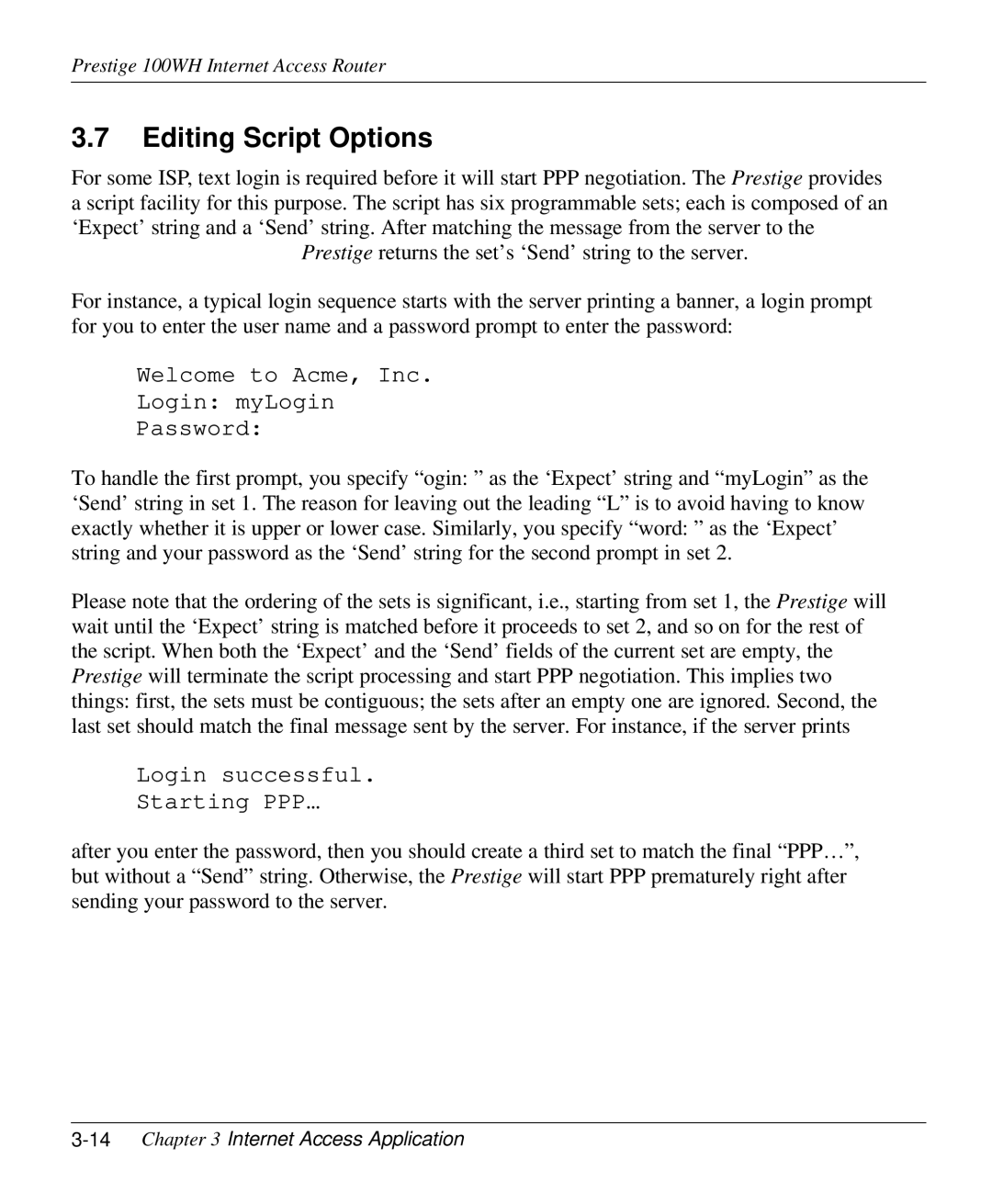
Prestige 100WH Internet Access Router
3.7Editing Script Options
For some ISP, text login is required before it will start PPP negotiation. The Prestige provides a script facility for this purpose. The script has six programmable sets; each is composed of an ‘Expect’ string and a ‘Send’ string. After matching the message from the server to the
Prestige returns the set’s ‘Send’ string to the server.
For instance, a typical login sequence starts with the server printing a banner, a login prompt for you to enter the user name and a password prompt to enter the password:
Welcome to Acme, Inc.
Login: myLogin
Password:
To handle the first prompt, you specify “ogin: ” as the ‘Expect’ string and “myLogin” as the ‘Send’ string in set 1. The reason for leaving out the leading “L” is to avoid having to know exactly whether it is upper or lower case. Similarly, you specify “word: ” as the ‘Expect’ string and your password as the ‘Send’ string for the second prompt in set 2.
Please note that the ordering of the sets is significant, i.e., starting from set 1, the Prestige will wait until the ‘Expect’ string is matched before it proceeds to set 2, and so on for the rest of the script. When both the ‘Expect’ and the ‘Send’ fields of the current set are empty, the Prestige will terminate the script processing and start PPP negotiation. This implies two things: first, the sets must be contiguous; the sets after an empty one are ignored. Second, the last set should match the final message sent by the server. For instance, if the server prints
Login successful.
Starting PPP…
after you enter the password, then you should create a third set to match the final “PPP…”, but without a “Send” string. Otherwise, the Prestige will start PPP prematurely right after sending your password to the server.
